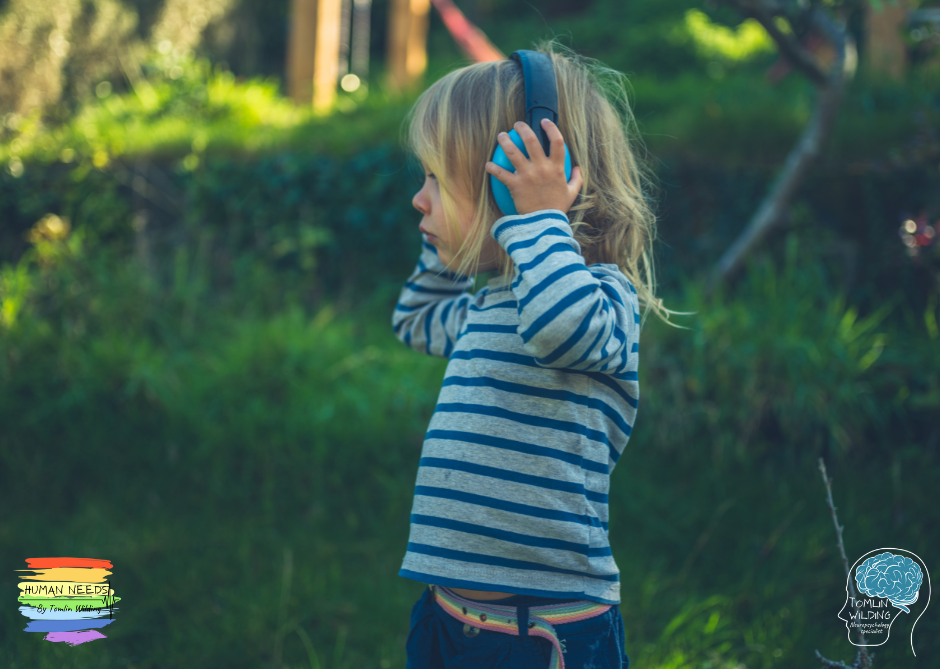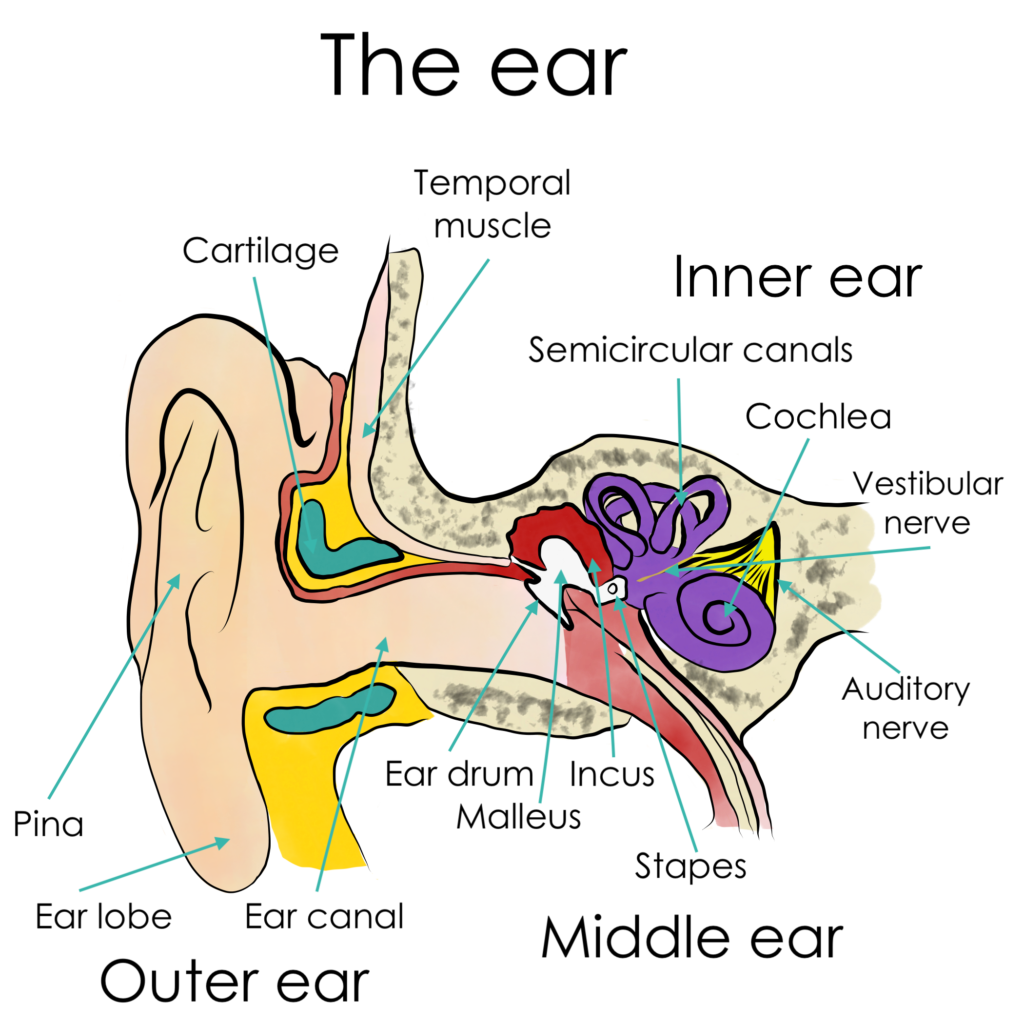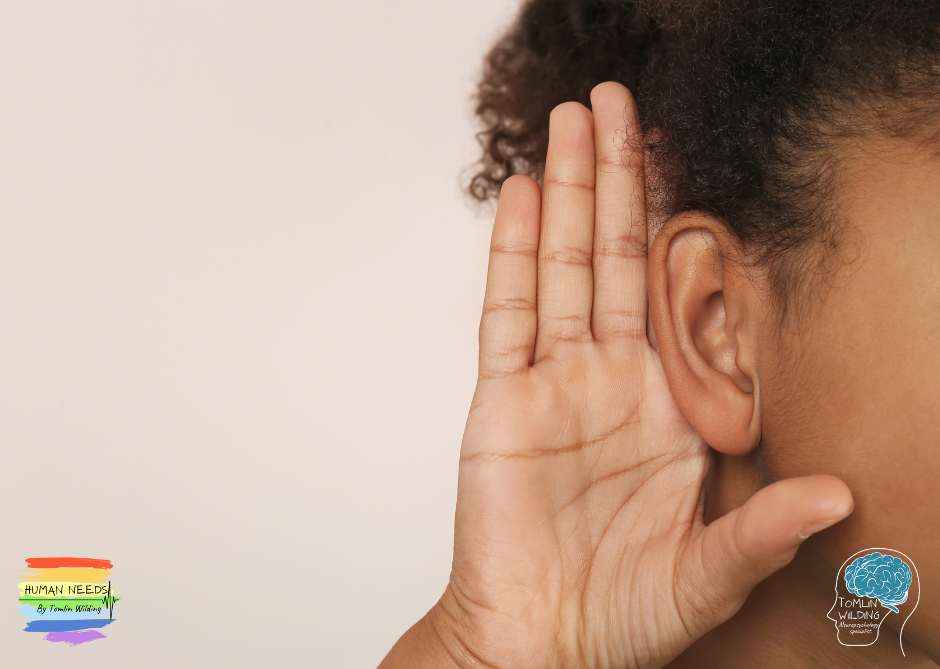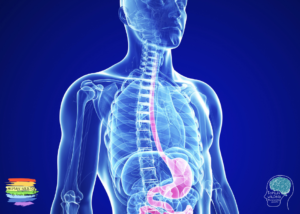Auditory function
Our auditory sense, or sense of hearing, has many important functions:
Hearing helps us communicate and connect with each other through hearing others when they speak, and even hearing ourselves. We also register other sounds that humans make and this helps us to recognise others’ needs, to comfort others and even protect them.
Hearing protects us from danger by enabling us to notice potential threats in our environment. As part of this, and beyond it, we use our hearing to make predictions about our environment so that we know what to expect and can be ready for it.
Hearing helps us meet our own regulation needs, by assisting with all our tasks and in performing all our functions. We use our hearing subconsciously all the time; listening to the sounds when we are cooking food to ensure we don’t ruin it, listening for when the washing machine finishes. These are just two simple examples of our everyday use of hearing.

Humans seek novelty through exploring and discovering new ways to make sound and new variations and combinations of sound. This creation of sounds is something that supports us in connecting with each other, helps us to feel and regulate our emotions, and provides us with sensory stimulation and soothing that we enjoy. We also have our own preferences when it comes to sound and music, and we often consider these presences of choices as a core part of our personal identity, helping us to feel a sense of individuality, or autonomy over our lives. Hearing helps us to enjoy of life through hearing our favourite sounds, enabling us to connect with nature, and and through hearing and making music. Anthropological study shows that we have made and enjoyed music from the beginning of being human.
Auditory regulation
Sensitivity in audition can be to various submodalities, such as pitch, tempo, volume, rhythm, vibration, and noise. Some people cannot bear sudden noises, or loud noises, or high pitched noise, all of which are known to be struggles of auditory defensiveness. This is usually due to experiencing most sounds too intensely.
Equally, some people seem to have generally sensitive detection thresholds. People with a low (extremely sensitive) absolute threshold in hearing report hearing sounds that typical people cannot hear. For instance, people have reported hearing all of their own body functions, the electricity in the walls, and someone breathing at the other side of a room. This constant input of auditory data can become overwhelming for some people.
Equally, people with a high threshold may not detect the sounds they want to and the system will “crave” more information for processing, leaving the person under-stimulated.
People with a low differential threshold find it hard to detect and distinguish between noises. This can have a high impact on learning with people potentially missing key information, missing a cue for listening, or not be able to connect socially.
Hypersensitive characteristics
- Distracted by sounds others do not notice
- Fearful of loud noises
- Strong alert response to sudden or loud noises
- Annoyed or distracted by background noise
- Frustrated that more than one person is talking at the same time
- Dislike certain people due to their voice.
Auditory avoidant behaviours
- Use of headphones or ear defenders
- Hum or sing to block out other sound
- Put your hand over your ears regularly
- Run away from certain noises
- Refuse to go to cinemas, concerts, shopping centres, swimming pools.


Hyposensitive characteristics
- Fails to respond to verbal prompts, including their name being called
- Has difficulty understanding or remembering what was said to them
- Appears oblivious to sounds others react to
- Cannot locate the direction of sound
Auditory seeking behaviours
- Chooses to have background music or sound much of the time
- Hums or sings to themselves
- Appears to make noise for the sake of it
- Seeks out sound for soothing and relaxing.
The science of auditory sense
Biology of hearing
The auditory sense system is made up of multiple types of receptors in three separate parts of the ear: the outer ear, the middle ear and the inner ear.
The outer ear
The folds of cartilage surrounding the ear canal (pina) reflect and attenuate sound, which provides additional data to allow the brain to detect elements such as sound direction. Sound enters our auditory canal, a simple tube, which amplifies sounds of certain frequencies. The tympanic membrane (ear drum), at the far end of our ear canal is the start of the middle ear.
The middle ear
After sound waves have travelled through the ear canal, and hit the ear drum, the wave information travels across the middle ear cavity via a series of small bones: the malleus (hammer), incus (anvil), and stapes (stirrup). These ossicles act as a lever, converting lower pressure vibrations into higher pressure vibrations for detection at a second, smaller membrane called the vestibular window. This is necessary because the inner ear, unlike the outer and middle ear, is filled with liquid rather than air. The middle ear has a special reflex (stapedius) within its muscles that protects the inner ear from damage by reducing the transmission of sound energy.

Original drawing of an ear by Tomlin Wilding
The inner ear
The inner ear consists of the cochlea and several non-auditory structures, related more to our vestibular (movement) sense. The cochlea has three fluid-filled sections: the Scala media, Scala tympani and the Scala vestibuli. The scala media, or cochlea duct, contains endolymph, a fluid similar in composition to the fluid found inside cells. The organ of Corti is located in this duct on the basilar membrane, and transforms mechanical waves to electric signals in neurons (transduction). The organ of Corti forms a ribbon of sensory epithelium (hair follicle cells), which runs lengthwise down the cochlea’s entire scala media. Its hair cells transform the fluid waves into nerve signals, which can be transmitted to the brain.
Neurology of the auditory sense
The primary auditory cortex
Perception of sound is associated with a part of the brain called the left posterior superior temporal gyrus (STG). It contains several important structures of the brain, including the primary auditory cortex, the cortical region responsible for the sensation of basic characteristics of sound such as pitch and rhythm. The neurons of the primary auditory cortex have receptive “fields” covering a range of auditory frequencies and have selective responses to harmonic pitches. Neurons integrating information from the two ears have receptive fields covering a particular region in this cortex.
The primary auditory cortex is surrounded by secondary auditory cortex, and interconnects with it. These secondary areas interconnect with further processing areas in the dorsal bank of the STG, including the superior temporal sulcus, and in the frontal lobe (in the neocortex). In humans, connections of these regions are probably important for speech perception. The fronto-temporal system underlying auditory perception allows us to distinguish sounds such as speech, and music, from general noise.
From the primary auditory cortex emerge two separate pathways: the auditory ventral stream and auditory dorsal stream. The auditory ventral stream is responsible for sound recognition, and extraction of meaning from sentences. The most established role of the auditory dorsal stream in primates is sound localisation. In humans, the auditory dorsal stream in the left hemisphere is also responsible for speech repetition and articulation, phonological long-term encoding of word, and verbal working memory.
The auditory system is made up of many different smaller areas in the brain, and getting any more technical than this is wholly unnecessary. If you want to research, some of these include: cochlear nucleus, trapezoid body, superior olivary complex, lateral lemniscus, inferior colliculi, and the medial geniculate nucleus.






